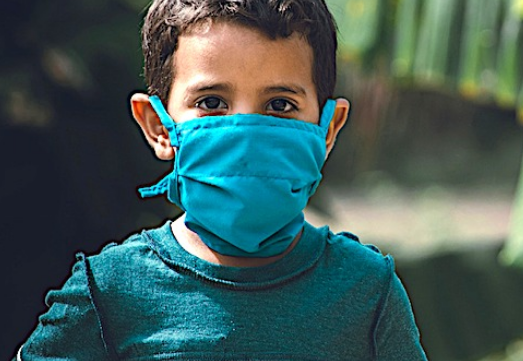‘Science’ at center of debate over reopening schools
WND
A study published Thursday in the prestigious journal JAMA Pediatrics finding children younger than 5 years with mild to moderate COVID-19 have much higher levels of genetic material for the virus in the nose compared to older children and adults has given fuel to the argument that schools should not resume in-person classes this fall.
However, while the authors of the study said their findings point to the possibility the youngest children transmit the coronavirus to other age groups, they don’t have evidence to support that conclusion.
“Our study was not designed to prove that younger children spread COVID-19 as much as adults, but it is a possibility,” said Dr. Taylor Heald-Sargent, a board certified pediatrician in Chicago. “We need to take that into account in efforts to reduce transmission as we continue to learn more about this virus.”
Further, advocates for opening schools, such as the American Academy of Pediatrics, point to the unintended consequences of a further shutdown and argue schools have stayed open or been reopened for some time other countries with success.
And the infection fatality rate must be taken into account. Overall, the Centers for Disease Control and Prevention estimates the infection fatality rate is well below 1%, and about 80% of the coronavirus deaths are people older than 65. In a study published in The Lancet Child & Adolescent Health on July 25 that examined 582 infected children from infants to age 18, four died. All four were older than age 10, and two had pre-existing medical conditions.
Moreover, schools have have been open in Germany, Denmark, Norway, Sweden and many other countries without any significant outbreaks, the Washington Post reported.
The Canadian province of Quebec reported its spring school reopening was a success and it looked forward to coming back in the fall. The National Post reported 53 students and teachers were diagnosed with COVID-19 in Quebec, but the vast majority of those cases occurred outside the classroom, and there were no serious illnesses.
Fauci: ‘Default position’ to reopen schools
At a congressional hearing Friday, Dr. Anthony Fauci, director of the National Institute of Allergy and Infectious Diseases said schools should reopen this fall.
He said a “default position” would be to try “as best as we possibly can in the context of the safety of the children and the teachers” to return students to classrooms.
Meanwhile, the American Federation of Teachers has authorized its chapters to strike if their districts don’t take precautions before returning children to school. In Florida, the state’s largest teachers’ union has sued Republican Gov. Ron DeSantis for requiring schools to offer in-person classes.
In Iowa, teachers are sending mock obituaries to Republican Gov. Kimberly Reynolds to presuade her to reconsider her plan to reopen schools, ABC News reported Thursday.
At the hearing Friday, CDC Director Dr. Robert Redfield said school closures will prevent 7.1 million children from accessing the mental health services and nutritional support that schools provide.
“It’s really important to realize it’s not public health versus the economy about school opening, it’s public health versus public health of the K-through-12 to get the schools open,” Redfield said. “We’ve got to do it safely and we have to be able to accommodate.”
Fauci said the spread of the virus among children younger than 10 is still unclear.
A large new study from South Korea, the New York Times reported, found children younger than 10 transmit to others much less often than adults do, although the risk is not zero. And those between the ages of 10 and 19 can spread the virus at least as well as adults do, the researchers concluded.
AAP: Students ‘physically present at school’
United Nations officials this week pointed to a study published in the British journal The Lancet that concluded lockdowns and school closures are doing more harm to children than the coronavirus itself. Many more deaths are expected to come from the reaction to the outbreak than the pandemic itself.
The Lancet paper said “physical distancing, school closures, trade restrictions, and country lockdowns” are worsening global child malnutrition.
An additional 6.7 million children will be at risk, the study said, and lockdowns and other coronavirus responses could lead to more than 10,000 additional child deaths every month. That would mean 128,000 more deaths among children within the next year.
Compiling research from the Washington-based International Food Policy Research Institute and the Johns Hopkins Bloomberg School of Public Health, the study concludes shutdown strategies could lead to “life-long impacts on education, chronic disease risks, and overall human capital formation” along with “intergenerational consequences for child growth and development.”
The study is consistent with other research that has concluded lockdowns will conservatively “destroy at least seven times more years of human life” than they save.
In contrast, a study published by JAMA, found a “temporal association between statewide school closure and lower COVID-19 incidence and mortality. The authors acknowledged, however, that “some of the reductions may have been related to other concurrent nonpharmaceutical interventions.”
Earlier this month, more than 80 infants test positive in one Texas county. But nearly all of the children, under 1 year of age, are expected to recover on their own. One of the children died, but officials have not yet determined that COVID-19 was the cause.
The American Academy of Pediatrics argued in its statement that “schools are fundamental to child and adolescent development and well-being and provide our children and adolescents with academic instruction, social and emotional skills, safety, reliable nutrition, physical/speech and mental health therapy, and opportunities for physical activity, among other benefits. Beyond supporting the educational development of children and adolescents, schools play a critical role in addressing racial and social inequity.”
“With the above principles in mind, the AAP strongly advocates that all policy considerations for the coming school year should start with a goal of having students physically present in school,” the academy said. “The importance of in-person learning is well-documented, and there is already evidence of the negative impacts on children because of school closures in the spring of 2020.











